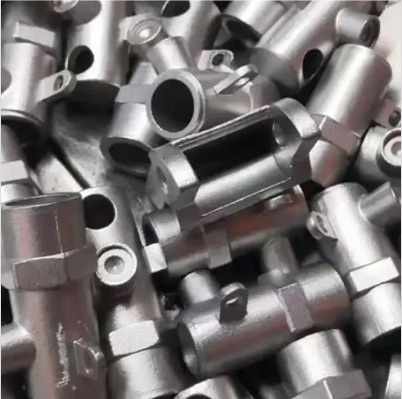Mobile:+86-311-808-126-83
Email:info@ydcastings.com
Understanding the Design and Functionality of Centrifugal Fan Impellers in Modern HVAC Systems
Understanding the Centrifugal Fan Impeller Design and Functionality
Centrifugal fans play a vital role in various applications, from industrial processes to HVAC systems, thanks to their ability to move air efficiently. At the heart of these fans lies the impeller—an essential component that significantly influences the fan's performance. This article delves into the structure, working principle, and importance of centrifugal fan impellers.
Structure of a Centrifugal Fan Impeller
A centrifugal fan impeller features a rotor with curved blades that are mounted on a central hub
. The design typically includes an eye (the inlet), where air enters, and an outlet where the air is expelled at a higher velocity. Impellers can be classified into two main types based on their blade configurations forward-curved and backward-curved.- Forward-Curved Blades These blades curve in the direction of the rotation. While they provide high airflow at relatively low pressure, they are less efficient at higher pressure applications. As a result, forward-curved impellers are often used in applications requiring large air volume at lower resistance, such as residential HVAC systems. - Backward-Curved Blades These blades curve away from the direction of rotation. This configuration allows for better efficiency and higher pressure capabilities, making them suitable for industrial applications where air needs to be moved against significant resistance, such as in dust collection systems or ventilation scenarios.
Working Principle
The operating principle of a centrifugal fan impeller is straightforward yet effective. As the impeller rotates, it draws air into the eye of the impeller due to the pressure differential created by its motion. The curvature of the blades accelerates the air as it moves outward toward the fan casing, converting kinetic energy into pressure energy. The centrifugal force generated by the impeller's rotation flings the air outward, increasing its velocity and creating a flow pattern that pushes the air out of the fan discharge.
centrifugal fan impeller

This conversion of energy is governed by Bernoulli’s principle, which states that an increase in the speed of a fluid occurs simultaneously with a decrease in pressure. This fundamental aerodynamic principle is what allows centrifugal fans to maintain effective airflow and pressure capabilities across various operating conditions.
Importance of Impeller Design
The design of the impeller profoundly impacts the local flow dynamics, efficiency, and sound characteristics of the fan. Engineers often optimize the dimensions, blade shape, and spacing to achieve the desired performance metrics. Additionally, the choice of material plays a critical role, especially in hostile environments where corrosion and wear are concerns. Materials such as aluminum, galvanized steel, or composite materials are commonly used based on the application requirements.
The geometry of the impeller also influences noise levels. A well-designed impeller can significantly reduce turbulence and noise generation, making the fan suitable for applications where sound levels are a priority, such as in residential or office environments.
Conclusion
The centrifugal fan impeller is a quintessential element in modern air-moving technologies, characterized by its robust design and efficiency. Understanding its structure, working principle, and the impacts of its design choices enables engineers to select or create optimal fan systems for specific applications. As industries continue to evolve, the development of advanced materials and design techniques will enhance the capabilities of centrifugal fan impellers, paving the way for more efficient and quieter air handling solutions.
-
Why Is Choosing the Right Motor Housing Critical for Engine Performance?NewsJul.18,2025
-
Which Impeller Types Best Optimize Your Pump’s Efficiency?NewsJul.18,2025
-
Optimize Maintenance Efficiency with Durable Oil Catch SolutionsNewsJul.18,2025
-
Maximize Pump Performance with Precision-Engineered ComponentsNewsJul.18,2025
-
Elevate Industrial Flow Systems with Precision-Engineered ComponentsNewsJul.18,2025
-
Boost Durability and Functionality with Precision Power CastingsNewsJul.18,2025











